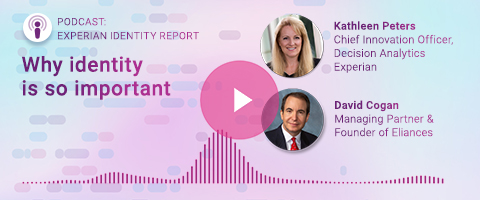Financial Services

As economic conditions shift and consumer behavior fluctuates, first- and third-party debt collectors must adapt to continually maintain effective debt collection strategies. In this article, we explore collections best practices that can empower collectors to improve operational efficiency, better prioritize accounts and enhance customer interactions, all while ensuring compliance with changing regulations. Best practices for improving your collection efforts 1. Implement a data-driven collection strategy Many collectors are already using artificial intelligence (AI) and machine learning (ML) to gain a more complete view of their consumers, segment accounts and create data-driven prioritization strategies. The data-backed approach is clearly a trend that's going to stick. But access to better (i.e., more robust and hygienic) data and debt collection analytics will distinguish the top performers.You can use traditional credit data, alternative credit data, third-party data and advanced analytics to more precisely segment consumers based on their behavior and financial situation — and to determine their propensity to pay. Supplementary data sources can also help with verifying consumers' current contact information and improving your right-party contact rates.Cloud-based platforms and access to various data sources give debt collectors real-time insights. Quickly identifying consumers who may be stretched thin or trending in the wrong direction allows you to proactively reach out with an appropriate pre-collection plan.And for consumers who are already delinquent, the more precise segmentation and tracking can help you determine the best contact channels, times and personalized treatments. For instance, you could optimize outreach based on specific account details (rather than general time-based metrics) and offer payment plans that the customer can likely afford. 2. Use technology to maximize your resources Data-driven prioritization strategies can help you determine who to contact, how to contact them and the treatment options you offer. But you may need to invest in technology to efficiently execute these findings. Although budgets may be limited, the investment in debt recovery tools can be important for handling rising account volumes without increasing headcount. Some opportunities include: Automate processes and outreach: Look for opportunities to automate tasks, particularly monotonous tasks, to reduce errors and free up your agents' time to focus on more valuable work. You could also use automated messages, texts, chatbots and virtual negotiators with consumers who will likely respond well to these types of outreaches. Establish self-service platforms: Create self-service platforms that give consumers the ability to choose how and when to make a payment. This can be especially effective when you can accurately segment consumers based on the likelihood that they'll self-cure and then automate your outreach to that segment. Keep consumer data up to date: Have systems in place that will automatically verify and update consumers' contact information, preferences and previous collection attempts. Reprioritize old accounts based on significant changes: Tools like Experian's Collection Triggers℠ allow you to monitor accounts and automatically get alerted when consumers experience a significant change, such as a new job, that could prompt you to put their account back into your queue. 3. Prioritize customer experience In some ways, debt collectors today often work like marketers by embracing digital debt collection and a customer-first philosophy to improve the consumers' experiences. Your investment in technology goes together with this approach. You'll be able to better predict and track consumers' preferences and offer self-cure options for people who don't want to speak directly with an agent. You also may need to review your regular onboarding and training programs. Teaching your call center agents to use empathy-based communication techniques and work as a partner with consumers to find a viable payment plan can take time. But the approach can help you build trust and improve customer lifetime value. 4. Continue to carefully monitor regulatory requirements Keeping up with regulatory requirements is a perennial necessity for collectors, and you'll need to consider how to stay compliant while adding new communications channels and storing consumer data. For example, make sure there are “clear and conspicuous" opt-out notices in your electronic communications and that your systems can track which channels consumers opt out of and their electronic addresses.1In some cases, the customer-first approach may help minimize regulatory risks, as you'll be training agents to listen to consumers and act in their interest. Similarly, data-driven optimizations can help you increase collections with fewer contacts.WATCH: Explore credit union collection trends and successful account management strategies. Partner with a top provider to achieve success Experian has partnered with many debt collectors to help them overcome challenges and increase recovery rates. There are multiple solutions available that you can use to improve your workflow: TrueTrace™ and TrueTrace Live™: Leverage access to the consumer credit database that has information on over 245 million consumers, and additional alternative databases, to maintain current addresses and phone numbers. PriorityScore for Collections ℠ Know which accounts you should focus on with over 60 industry-specific debt recovery scores. You can choose to prioritize based on likelihood to pay or expected recovery amount. Collection Triggers℠: Daily customer monitoring can tell you when it's time to approach a consumer based on life events, such as new employment or recent credit inquiries. Phone Number ID™ with Contact Monitor™: Increase right-party contact rates and avoid Telephone Consumer Protection Act (TCPA) violations with real-time phone ownership and type monitoring from over 5,000 local exchange carriers. Experian's PowerCurve® Collections and Experian® Optimize solutions also make AI-driven automated systems accessible to debt collectors that previously couldn't afford such advanced capabilities. Building on Experian's access to many sources of credit and non-credit data, these solutions can help you design debt collection strategies, predict consumer behavior and automate decisioning.Learn more about Experian's debt collection solutions. Learn more This article includes content created by an AI language model and is intended to provide general information.

"Out with the old and in with the new" is often used when talking about a fresh start or change we make in life, such as getting a new job, breaking bad habits or making room in our closets for a new wardrobe. But the saying doesn't exactly hold true in terms of business growth. While acquiring new customers is critical, increasing customer retention rates by just 5% can increase profits by up to 95%.1 So, what can your organization do to improve customer retention? Here are three quick tips: Stay informed Keeping up with your customers’ changing interests, behaviors and life events enables you to identify retention opportunities and create personalized credit marketing campaigns. Are they new homeowners? Or likely to purchase a vehicle within the next five months? With a comprehensive consumer database, like Experian’s ConsumerView®, you can gain granular insights into who your customers are, what they do and even what they will potentially do. To further stay informed, you can also leverage Retention TriggersSM, which alert you of your customers changing credit needs, including when they shop for new credit, open a new trade or list their property. This way, you can respond with immediate and relevant retention offers. Be more than a business – be human Gen Z's spending power is projected to reach $12 trillion by 2030, and with 67% looking for a trusted source of personal finance information,2 financial institutions have an opportunity to build lifetime loyalty now by serving as their trusted financial partners and advisors. To do this, you can offer credit education tools and programs that empower your Gen Z customers to make smarter financial decisions. By providing them with educational resources, your younger customers will learn how to strengthen their financial profiles while continuing to trust and lean on your organization for their credit needs. Think outside the mailbox While direct mail is still an effective way to reach consumers, forward-thinking lenders are now also meeting their customers online. To ensure you’re getting in front of your customers where they spend most of their time, consider leveraging digital channels, such as email or mobile applications, when presenting and re-presenting credit offers. This is important as companies with omnichannel customer engagement strategies retain on average 89% of their customers compared to 33% of retention rates for companies with weak omnichannel strategies. Importance of customer retention Rather than centering most of your growth initiatives around customer acquisition, your organization should focus on holding on to your most profitable customers. To learn more about how your organization can develop an effective customer retention strategy, explore our marketing solutions. Increase customer retention today 1How investing in cardholder retention drives portfolio growth, Visa. 2Experian survey, 2023.

Believe it or not, 2023 is underway, and the new year could prove to be a challenging one for apartment operators in certain ways. In 2021 and into the beginning of 2022, demand for apartment rentals approached record levels, which shrunk vacancy rates and increased monthly rents. The rest of the year remained stagnant while other regions saw some decline, but inflation and other economic factors have many apartment communities confronted with labor shortages, and other challenges which can certainly make leasing and operating properties difficult. Against that backdrop, here are some of the technologies and solutions operators should consider for optimizing their success and efficiencies in 2023 and beyond. Tools that allow prospective residents to have a fully digital and contactless leasing experience — During the pandemic, many operators rushed to implement virtual tours, onsite self-guided tours and other solutions that allowed prospects to apply for and finalize their leases remotely. Prospective renters have undoubtedly grown fond of navigating the leasing process from their homes and taking self-guided tours when onsite, and the demand for digital solutions will surely continue even after COVID distancing is no longer a factor. Therefore, apartment owners and operators should think of these capabilities as long-term investments and always seek ways to optimize the digital leasing experience they provide. Along those lines, forward-thinking operators are employing solutions that allow them to embed credit functionality into their websites and mobile apps using modern, RESTful APIs like the Experian ConnectSM API. Not only does it enhance the information included in a lease application with credit report data, but it also allows prospective renters to easily apply for more than one property at once, enhancing their experience at the same time. Automated lease application form fill — By using information entered by a lease applicant (such as first name, last name, postal code and the last four digits of a Social Security number), this technology uses information from credit files to automatically fill other data fields in a lease application. This tool reduces the effort required by prospective renters to complete the application process, resulting in a better user experience, faster completions, greater accuracy and reduced application abandonment. Automated verification of income, assets, and employment — These solutions eliminate the need for associates to manually verify these components of a lease application. Manual verification is both time-consuming and prone to human error. In addition, automated tools eliminate the opportunity for applicants to supply falsified supporting documentation. The best part about verification is the variety of options available; leasing managers can pick and choose verification options that meet their needs. Renter Risk Score™ and custom-built scores and models applying RentBureau data — These options offer a score designed expressly to predict the likelihood that an applicant will pay rent. Renter risk score can be purchased with preset score logic, or for high-volume decisions, a model can be built calibrated for your specific leasing decisioning needs. A rental payment history report — The RentBureau Consumer Profile tool can provide detailed insight into a lease applicant's history of meeting their lease obligations, which is invaluable information during the lease application process. Having a tool to report rental payment histories to credit bureaus can be a powerful financial amenity. By reporting these payments, operators can help residents build credit histories and improve financial well-being. Such an amenity can attract and retain residents and provide them with a powerful incentive to pay rent on time and in full. In the end, tools that seek to manage risk and create improved experiences for prospective renters have a multitude of benefits. They create meaningful efficiencies for onsite staff by greatly reducing the time, resources and paperwork required to process applications and verify applicant information. This gives overextended associates more time to handle their many other responsibilities. Beyond just efficiency savings, these technologies and solutions also can help operators avoid the complications and loss of income that result from evictions. In fact, the National Association of Realtors estimates that average eviction costs $7,685. Managing risk and providing the best possible customer experience should always be top of mind for rental housing operators. And with the solutions outlined above, they can effectively accomplish those goals in 2023 and beyond.

How businesses respond to economic uncertainty can determine whether they get ahead or fall behind. To better prepare for the coming months, you must remain up to date on the latest economic developments to better understand and evolve with changing consumer needs. With insight into critical macroeconomic and consumer trends, you can proactively manage your portfolio, enhance your decisioning and seize new opportunities. Grab a cup of coffee and join Experian's Shawn Rife, Client Executive, and Josee Farmer, Economic Analyst, during our fireside chat on February 16 @ 1 P.M. ET/10 A.M. PT. Our expert speakers will provide a view of the latest economic and market trends, their impact on consumers, and how financial institutions can survive and thrive. Highlights include: Macroeconomic and consumer credit trends Economic implications on consumer behavior How financial institutions can adapt Register now

With fraud expected to surge amid uncertain economic conditions, fraudsters are preparing new deception techniques to outsmart businesses and deceive consumers. To help businesses prepare for the coming fraud threats, we created the 2023 Future of Fraud Forecast. Here are the fraud trends we expect to see over the coming year: Fake texts from the boss: Given the prevalence of remote work, there’ll be a sharp rise in employer text fraud where the “boss” texts the employee to buy gift cards, then asks the employee to email the gift card numbers and codes. Beware of fake job postings and mule schemes: With changing economic conditions, fraudsters will create fake remote job postings, specifically designed to lure consumers into applying for the job and providing private details like a social security number or date of birth on a fake employment application. Frankenstein shoppers spell trouble for retailers: Fraudsters can create online shopper profiles using synthetic identities so that the fake shopper’s legitimacy is created to outsmart retailers’ fraud controls. Social media shopping fraud: Social commerce currently has very few identity verification and fraud detection controls in place, making the retailers that sell on these platforms easy targets for fraudulent purchases. Peer-to-peer payment problems: Fraudsters love peer-to-peer payment methods because they’re an instantaneous and irreversible way to move money, enabling fraudsters to get cash with less work and more profit “As fraudsters become more sophisticated and opportunistic, businesses need to proactively integrate the latest technology, data and advanced analytics to mitigate the growing fraud risk,” said Kathleen Peters, Chief Innovation Officer at Experian Decision Analytics in North America. “Experian is committed to continually innovating and bringing solutions to market that help protect consumers and enable businesses to detect and prevent current and future fraud.” To learn more about how to protect your business and customers from rising fraud trends, download the Future of Fraud Forecast and check out Experian’s fraud prevention solutions. Future of Fraud Forecast Press Release

Putting customers at the center of your credit marketing strategy is key to achieving higher response rates and building long-term relationships. To do this, financial institutions need fresh and accurate consumer data to inform their decisions. Atlas Credit was looking to achieve higher response rates on its credit marketing campaigns by engaging consumers with timely and personalized offers. The company implemented Experian’s Ascend Marketing, a customer marketing and acquisition engine that provides marketers with accurate and comprehensive consumer credit data to build and deploy intelligent marketing campaigns. With deeper insights into their consumers, Atlas Credit created timely and customized credit offers, resulting in a 185% increase in loan originations within the first year of implementation. Additionally, the company was able to effectively manage and monitor its targeting strategies in one place, leading to improved operational efficiency and lower acquisition costs. To learn more about creating better-targeted marketing campaigns and enhancing your strategies, read the full case study. Download the case study Learn more

Alternative credit scoring has become mainstream. Lenders that use alternative credit scores can find opportunities to expand their lending universe without taking on additional risk and more accurately assess the credit risk of traditionally scoreable consumers. Obtaining a more holistic consumer view can help lenders improve automation and efficiency throughout the customer lifecycle. What is alternative credit scoring? Alternative credit scoring models incorporate alternative credit data* that isn't typically found on consumer credit reports. These scores aren't necessarily trying to predict alternative outcomes. The goal is the same — to understand the likelihood that a borrower will miss payments in the future. What's different is the information (and sometimes the analytical techniques) that inform these predictions.Traditional credit scoring models solely consider information found in consumer credit reports. There's a lot of information there — Experian's consumer credit database has data on over 245 million consumers. But although traditional consumer data can be insightful, it doesn't necessarily give lenders a complete picture of consumers' creditworthiness. Alternative credit scores draw from additional data sources, including: Alternative financial services: Credit data from alternative financial services (AFS) can tell you about consumers' experiences with small-dollar installment loans, single-payment loans, point-of-sale financing, auto title loans and rent-to-own agreements. Buy Now Pay Later: Buy Now Pay Later (BNPL) borrowing is popular with consumers across the scoring spectrum, and lenders can use access to open BNPL loans to better assess consumers' current capacity. Rental payments: Landlords, property managers, collection companies, rent payment services and consumer-permissioned data can give lenders access to consumers' rent payment history. Full-file public records: Credit reports generally only include bankruptcy records from the previous seven to ten years. However, lenders with access to full-file public records can also learn about consumers' property deeds, address history, and professional and occupational licenses. READ: Take a deep dive into Experian's State of Alternative Credit Data report to learn more about the different types of alternative credit data and uses across the loan lifecycle. With open banking, consumers can now easily and securely share access to their banking and brokerage account data — and they're increasingly comfortable doing so. In fact, 70% would likely share their banking data for better loan rates, financial tools or personalized spending insights.Tools like Experian Boost allow consumers to add certain types of positive payment information to their Experian credit reports, including rent, utility and select streaming service payments. Some traditional scores consider these additional data points, and users have seen their FICO Score 8 from Experian boosted by an average of 13 points.1 Experian Go also allows credit invisible consumers to establish a credit report with consumer-permissioned alternative data. The benefits of using alternative credit data The primary benefit for lenders is access to new borrowers. Alternative credit scores help lenders accurately score more consumers — identifying creditworthy borrowers who might otherwise be automatically denied because they don't qualify for traditional credit scores. The increased access to credit may also align with lenders' financial inclusion goals.Lenders may additionally benefit from a more precise understanding of consumers who are scoreable. When integrated into a credit decisioning platform, the alternative scores could allow lenders to increase automation (and consumers' experiences) without taking on more credit risk. The future of alternative credit scoring Alternative credit scoring might not be an alternative for much longer, and the future looks bright for lenders who can take advantage of increased access to data, advanced analytics and computing power.Continued investment in alternative data sources and machine learning could help bring more consumers into the credit system — breaking barriers and decreasing the cost of basic lending products for millions. At the same time, lenders can further customize offers and automate their operations throughout the customer lifecycle. Partnering with Experian Small and medium-sized lenders may lack the budget or expertise to unlock the potential of alternative data on their own. Instead, lenders can turn to off-the-shelf alternative models that can offer immediate performance lifts without a heavy IT investment.Experian's Lift PlusTM score draws on industry- leading mainstream credit data and FCRA-regulated alternative credit data to provide additional consumer behavior insights. It can score 49% of mainstream credit-invisible consumers and for thin file consumers with a new trade, a 29% lift in scoreable accounts. Learn more about our alternative credit data scoring solutions. Learn more * When we refer to “Alternative Credit Data," this refers to the use of alternative data and its appropriate use in consumer credit lending decisions as regulated by the Fair Credit Reporting Act (FCRA). Hence, the term “Expanded FCRA Data" may also apply in this instance and both can be used interchangeably.1Experian (2023). Experian Boost

E-commerce digital transactions are rapidly increasing as online shopping becomes more convenient. In fact, e-commerce is projected to exceed 17% of all retail sales worldwide by 2027. As a result, opportunities for fraudsters to exploit businesses and consumers for monetary gain are reaching high levels. Businesses must be aware of the risks associated with card not present (CNP) fraud and take steps to protect themselves and their customers. What is card not present fraud? CNP fraud occurs when a criminal uses a stolen or compromised credit card to make a purchase online, over the phone, or through some other means where the card is not physically present at the time of the transaction. This type of fraud can be particularly difficult to detect and prevent, as it relies on the use of stolen card information rather than the physical card itself. CNP fraud can yield significant losses for businesses — these attacks are estimated to reach a staggering $28 billion in losses by 2026. Many have adopted various fraud prevention and identity resolution and verification tools to better manage risk and prevent fraud losses. Since much of the success or failure of e-commerce depends on how easy merchants make it for consumers to complete a transaction, incorporating CNP fraud prevention and identity verification tools in the checkout process should not come at the expense of completing transactions for legitimate customers. What do we mean by that? Let’s look at false declines. What is a false decline? False declines occur when legitimate transactions are mistakenly declined due to the business's fraud detection system incorrectly flagging the transaction as potentially fraudulent. This can not only be frustrating for cardholders, but also for merchants. Businesses may lose the sale and also be on the hook for any charges that result from the fraudulent activity. They can also result in damage to the business's reputation with customers. In either case, it is important for businesses to have measures in place to mitigate the risks of both. How can online businesses increase sales without compromising their fraud defense? One way to mitigate the risk of CNP fraud is to implement additional security measures at the time of transaction. This can include requiring additional verification information, such as a CVV code or a billing zip code to further authenticate the card holder’s identity. These measures can help to reduce the risk of CNP fraud by making it more difficult for fraudsters to complete a transaction. Machine learning algorithms can help analyze transaction data and identify patterns indicating fraudulent activity. These algorithms can be trained on historical data to learn what types of transactions are more likely to be fraudulent and then be used to flag potentially fraudulent transactions before it occurs. Businesses require data and technology that raise confidence in a shopper’s identity. Currently, the data merchants receive to approve transactions is not enough. A credit card owner verification solution like Experian Link fills this gap by enabling online businesses to augment their real-time decisions with data that links customer identity to the credit card being presented for payment to help verify the legitimacy of a transaction. Using Experian Link, businesses can link names, addresses and other identity markers to the customer’s credit card. The additional data enables better decisions, increased sales, decreased costs, a better buyer experience and better fraud detection. Get started with Experian Link™ - our frictionless credit card owner verification solution. Learn more

For a credit prescreen marketing campaign to be successful, financial institutions must first define their target audience. But just because you’ve identified your ideal customers, it doesn’t mean that every individual within that group has the same needs, interests or behaviors. As such, you’ll need to use data-driven customer segmentation to create messages and offers that truly resonate. Customer segmentation example Customer segmentation is the practice of dividing your target audience into smaller sub-groups based on shared characteristics, behaviors or preferences. This allows you to develop highly targeted marketing campaigns and engage with individual groups in more relevant and meaningful ways. What role does data play in customer segmentation? When it comes to segmenting customers, there isn’t a one-size-fits-all approach that works perfectly for all campaigns and markets. However, regardless of the campaign, you’ll need accurate and relevant data to inform your segmenting strategy. Let’s walk through a customer segmentation example. Say you want to launch a credit marketing campaign that targets creditworthy consumers in the market for a new mortgage. Some of the most influential data points to consider when segmenting include: Demographics Demographic data allows you to get to know your customers as individuals in terms of age, gender, education, occupation and marital status. If you want to create a segment that consists of only middle-aged consumers, leveraging demographic data makes it easier to identify these individuals, refine your messaging and predict their future buying behaviors. Life stage Life event data, such as new parents and new homeowners, helps you connect with consumers who have experienced a major life event. Because you’re targeting consumers in the market for a new mortgage, using fresh and accurate life stage data can help you create an engaging, event-based marketing campaign relevant to their timeline. Financial Financial data segments go beyond income and estimate the way consumers spend their money. With deeper insights into customers’ financial behaviors, you can more accurately assess creditworthiness and make smarter lending decisions. Transactional Transactional data segments group your customers according to their unique buying habits. By getting to know why they purchase your products or their frequency of spend, you can gain a better understanding of who your most engaged customers are, segment further and find opportunities for cross-sell and upsell. Why is data-driven customer segmentation critical for your business? With data-driven customer segmentation, you can develop relevant marketing campaigns and messages that speak to specific audiences, enabling you to demonstrate your value propositions more clearly and deliver personalized customer experiences. Additionally, because customer segmentation enables you to tailor your marketing efforts to those most likely to respond, you can achieve higher conversions while cutting down on marketing spend and resources. Ready to get started? While data-driven customer segmentation may seem overwhelming, Experian can help fill your marketing gaps with custom-based data, audiences and solutions. Armed with a better understanding of your consumers’ patterns and journeys, you can start targeting them more effectively. Create highly targeted credit marketing campaigns

With an abundance of loan options in today’s market, retaining customers can be challenging for banks and credit unions, especially small or regional institutions. And as more consumers look for personalization and digital tools in their banking experience, the likelihood of switching to institutions that can meet these demands is increasing.1 According to a recent Experian survey, 78% of consumers have conducted personal banking activities online in the last three months. However, 58% of consumers don’t feel that businesses completely meet their expectations for a digital online experience. To remain competitive in today's market, organizations must enhance their prescreen efforts by accelerating their digital transformation. Prescreen in today's economic environment While establishing a strong digital strategy is crucial to meeting the demands of today’s consumers, economic conditions are continuing to change, causing many financial institutions to either tighten their marketing budgets or hold off on their prescreen efforts completely. Fortunately, lenders can still drive growth during a changing economy without having to make huge cuts to their marketing budgets. How? The answer lies in digital prescreen. Case study: Uncover hidden growth opportunities Wanting to grow their business and existing relationships, Clear Mountain Bank looked for a solution that could help them engage customers with money-saving product offers while delivering a best-in-class digital banking experience. Leveraging Digital Prescreen with Micronotes, the bank was able to identify and present dollarized savings to customers who held higher-priced loans with other lenders. What’s more, the bank extended these offers through personalized conversations within their online and mobile banking platforms, resulting in improved digital engagement and increased customer satisfaction. By delivering competitive prescreen offers digitally, Clear Mountain Bank generated more than $1 million in incremental loans and provided customers with an average of $1,615 in cost savings within the first two months of deployment. “Digital Prescreen with Micronotes supplied the infrastructure to create higher-quality, personalized offers, as well as the delivery and reporting. They made prescreen marketing a reality for us.” – Robert Flockvich, Director of Community Outreach and Retail Lending at Clear Mountain Bank To learn more about how you can grow your portfolio and customer relationships, read the full case study or visit us. Download the case study Visit us 1The Keys to Solving Banking’s Customer Loyalty & Retention Problems, The Financial Brand, 2022.

Financial institutions have gone through a whirlwind in the last few years, with the pandemic forcing many to undergo digital transformations. More recently, rising interest rates and economic uncertainty are leading to a pullback, highlighting the need for lenders to level up their marketing strategies to win new customers. To get started, here are a few key trends to look out for in the new year and fresh marketing ideas for lenders. Challenges and consumers expectations in 2023 It might be cliche to mention the impact that the pandemic had on digital transformations — but that doesn't make it any less true. Consumers now expect a straightforward online experience. And while they may be willing to endure a slightly more manual process for certain purchases in their life, that's not always necessary. Lenders are investing in front-end platforms and behind-the-scenes technology to offer borrowers faster and more intuitive services. For example, A McKinsey report from December 2021 highlighted the growth in nonbank mortgage lenders. It suggested nonbank lenders could hold onto and may continue taking market share as these tech-focused lenders create convenient, fast and transparent processes for borrowers.2 Marketers can take these new expectations to heart when discussing their products and services. To the extent you have one in place, highlight the digital experience that you can offer borrowers throughout the application, verifications, closing and loan servicing. You can also try to show rather than tell with interactive online content and videos. Build a data-driven mortgage lending marketing strategy The McKinsey report also highlighted a trend in major bank and nonbank lenders investing in proprietary and third-party technology and data to improve the customer experience.2 Marketers can similarly turn to a data-driven credit marketing strategy to help navigate shifting lending environments. Segment prospects with multidimensional data Successful marketers can incorporate the latest technological and multidimensional data sources to find, track and reach high-value prospects. By combining traditional credit data with marketing data and Fair Credit Report Act-compliant alternative credit data* (or expanded FCRA-regulated data), you can increase the likelihood of connecting with consumers who meet your credit criteria and will likely respond. For example, Experian's mortgage-specific In the Market Models predict a consumer's propensity to open a new mortgage within a one to four-month period based on various inputs, including trended credit data and Premier Attributes. You can use these propensity models as part of your prescreen criteria, to cross-sell current customers and to help retain customers who might be considering a new lender. But propensity models are only part of the equation, especially when you're trying to extend your marketing budget with hyper-segmented campaigns. Incorporating your internal CRM data and non-FCRA data can help you further distinguish look-alike populations and help you customize your messaging. LEARN MORE: Use this checklist to find and fix gaps in your prospecting strategy Maintain a single view of your borrowers An identity management platform can give you a single view of a consumer as they move through the customer journey. The persistent identity can also help you consistently reach consumers in a post-cookie world and contact them using their preferred channel. You can add to the persistent identity as you learn more about your prospects. However, you need to maintain data accuracy and integrity if you want to get a good ROI. Use triggers to guide your outreach You can also use data-backed credit triggers to implement your marketing plan. Experian's Prospect Triggers actively monitors a nationwide database to identify credit-active consumers who have new tradelines, inquiries or a loan nearing term. Lenders using Prospect Triggers can receive real-time or periodic updates and customize the results based on their screening strategy and criteria, such as score ranges and attributes. They can then make firm credit offers to the prospects who are most likely to respond, which can improve cross-selling opportunities along with originations. Benefit from our expertise Forward-thinking lenders should power their marketing strategies with a data-backed approach to incorporate the latest information from internal and external sources and reach the right customer at the right time and place. From list building to identity management and verification, you can turn to Experian to access the latest data and analytics tools. Learn about Experian credit prescreen and marketing solutions. Explore our credit prescreen solutions Learn about our marketing solutions 1Mortgage Bankers Association (October 2022). Mortgage Applications Decrease in Latest MBA Weekly Survey 2McKinsey & Company (2021). Five trends reshaping the US home mortgage industry

Conventional credit scoring systems are based on models developed over six decades. As consumer behavior evolves, it's important to seek newer, fresher sources of data to assess creditworthiness. Because the data used by conventional credit scoring models does not provide the full picture of a consumer's financial health, a large population segment of the United States is excluded from accessing credit.With changing times and new technology, forward-thinking financial institutions are using alternative data1 to gain a more holistic consumer view. A move toward inclusive finance, including incorporating alternative data in credit scoring models, is a crucial step towards promoting financial inclusion and helping millions of consumers achieve their financial and personal goals. More importantly, it provides the insight needed for lender confidence, which can help fuel business growth. Understanding limitations of the conventional scoring system Credit scores can be obtained from any one of the major credit bureaus based on information found in a consumer's credit report and are incorporated into a lender's credit-decisioning process. While there are various credit scoring models based on lender preference that could yield slightly different scores, all traditional scores are comprised of credit characteristics within these categories: payment history, credit mix, credit history length, amounts owed and new credit account inquires. Lenders use past credit performance to predict whether extending credit is a risk, posing a major challenge for credit invisible and thin-file consumers and leaving millions at a disadvantage. This dilemma also limits business growth for lenders. Consumers who are unable to access mainstream credit often turn to the alternative financial services (AFS) industry, a $140 billion market that continues to grow by 7-10 percent each year.2 The AFS industry offers consumers additional products, like payday loans, cash advances, short-term installment loans, and rent-to-own loans, none of which are included in a traditional credit file. With alternative credit data, lenders can obtain a more holistic view of creditworthiness and risk, helping to enhance inclusive lending by broadening their pool of potential loan candidates. Why conventional scoring models simply aren't enough Because of the criteria used to assess creditworthiness, conventional credit scoring models do not accurately capture an individual's financial behavior or health. Indeed, many people demonstrate financial responsibility in other legitimate ways that are not reported to the major credit bureaus.In contrast, non-traditional data considers a consumer's everyday financial behavior to provide a more accurate score for lenders. It can include a range of indicators, such as: Bill payments: Consistent payment history on typical household bills (which may have been paid from a debit account). Bank account data: Shows average balance and withdrawal activity and recurring payroll deposits (indicating that a consumer is employed and receives a regular income). Rental data: Indicates a consumer's long-term stability in making regular, on-time monthly rent payments. Registered licenses: Registered licenses or membership with a skilled trade or profession can indicate the likelihood to generate income. Including this type of data can benefit both lenders and applicants. According to an Experian report, by adding alternative credit data to a near-prime population, lenders could see an increase in approvals for consumers historically being left behind. When Clear Early Risk Score™ is paired with the VantageScore® credit score, approvals climb to 16 percent of the population inside the same risk criteria, representing a 60 percent lift in credit approvals for near-prime consumers.2 The pool of people from whom this type of alternative data can reliably be collected is growing, with 70 percent of consumers willing to provide additional financial information to a lender if it increases their chance for approval or improves their interest rate for a mortgage or car loan.3 Plenty of available yet untapped data exists that can add value to a consumer's profile and lead to greater inclusive lending. For example, 95 percent of Americans own a cell phone and about two-thirds of households headed by young adults are being rented. Reporting on this data could potentially "thicken" a credit file and provide deeper insight into a consumer's credit behavior.3Indeed, turning to non-traditional data can expand the credit universe and lead to more inclusive credit scoring models, especially by leveraging existing technology and financial inclusion solutions. Research shows that with Lift Premium™, virtually all of the 21 million conventionally unscorable consumers would become scoreable, and over 1 million of them would have scores in the near-prime range or better. Of these, 1.7 million would be Black American and Hispanic/Latino people.3 For lenders, these numbers reveal potential opportunities to grow their businesses. Of the 255 million adults in the U.S., 19 percent of credit eligible adults are left out of mainstream scoring systems. 28 million are considered credit invisible – meaning they have no credit history (11%). 21 million are considered unscorable – have partial credit history but not enough to generate a score using conventional models (8%). Of the remaining credit eligible adults, 57 million were considered subprime (22%). 106 million U.S. adults can't get mainstream credit rates (42%). Adopting inclusive finance lending practices is not only the right thing to do but also provides financial institutions with the chance to reach untapped markets, grow their business and promote a healthier economy. Financial inclusion is not a destination, but an ever-evolving journey. Don't miss out on this critical opportunity to join the movement. Learn more about our financial inclusion tools to help enhance your inclusive lending approach. 1"Alternative Credit Data,” refers to the use of alternative data and its appropriate use in consumer credit lending decisions, as regulated by the Fair Credit Reporting Act. Hence, the term “Expanded FCRA Data” may also apply in this instance and both can be used interchangeably.2Experian: 2020 State of Alternative Credit Data.3Oliver Wyman white paper, “Financial Inclusion and Access to Credit," January 12, 2022.

The collections landscape is changing due to shifting consumer behaviors, demands, regulations and an economy that’s in a constant state of flux. As the market evolves, the need for greater insight and analysis grows. Matthew Baltzer, Experian’s Senior Director of Product Marketing, discusses challenges facing the collections industry and how you can continue to build a profitable portfolio. For more information on enhancing your collections strategy, view our full Q&A video. Q: Which macroeconomic trends should debt collectors be the most aware of and why? A:While we are still seeing a reasonably healthy consumer, there are trends to monitor. The first would be employment, which continues to be strong. Laid-off individuals are typically able to move back into the labor force. Second, we're seeing strong consumer spending, with rates higher than in the past three years and high origination activity. A third is declining savings rates. During the pandemic, consumers stored away extra cash, which has since come to a halt. Part of that is likely due to inflation, but it could also point to signs of financial strain. Q: How could these trends impact debt collections strategies moving forward? A: At a portfolio level, they’re good news. The average consumer’s ability to pay has yet to degrade significantly. So, collectors should be able to continue collecting payments. However, six months from now, the impact of inflation and interest rates could take a toll, and settlement offers, or higher upfront payments, may be important tools to consider. Due to increasing interest rates, many households will send money to creditors, leaving less for everyday spending. Q: How has the average consumer been affected by inflation? A: As I mentioned, both consumer spending and overall debt are up. However, when it comes to spending, certain ‘categories’ are more impacted by inflation than others. Of course, home equity and mortgages are higher, which while important, is less impactful for debt collectors. In our recent webinar, ‘Economic Outlook and the Influence on Debt Collections,’ we highlighted the uneven impact inflation has on lower earners in categories such as rent, food and energy. Due to this, collectors may see a rise in delinquency rates, particularly in unsecured personal loans and potentially automotive loans. Q: How should consumers' response to inflation impact collections efforts? A: There may be an increase in opportunities in certain trades, such as utilities, automotive and unsecured personal loans. Are you positioned as an organization to target and serve those markets? For those in the industry, the real potential for an economic weakness should present an opportunity to evaluate your collection strategy. How will you adapt to a 20 to 30% increase in volume? What about working accounts with smaller balances, which we've seen more of since the last larger recession? Experian offers software and decisioning solutions that help debt collectors optimize their strategies for an improved return on investment. Q: What consumer specific data can help lenders better predict distressed consumers? A: As an originator, the first approach to consider should be leveraging new types of data that were not available during the last recession, such as trended, third-party and alternative credit data. Supplementary data can provide leading indicators that risk is increasing before a consumer goes delinquent and their accounts are past due. Additionally, advanced analytics scoring models can help you determine which accounts are more likely to be recoverable. Experian has a new scoring model that uses a complex blend of attributes to assess each trade's history and position in wallet to better predict the likelihood of that account self-curing and separate accounts that need the most attention from those that may need more time. Finally, with accurate consumer contact data, you can enhance your digital engagement strategy and reach the right person, at the right time, on the channel they prefer There’s no time like the present to equip yourself with a successful debt management strategy. With a more holistic consumer view, you can improve account prioritization, predictability and right-party contact rates. Learn more about our debt management solutions here. Watch on-demand webinar

Kathleen Peters, Chief Innovation Officer, Decision Analytics for Experian, was recently featured on the Eliances Heroes podcast as part of the new weekly segment, the “Experian Identity Report.” In the introductory show, podcast host David Cogan, spoke with Kathleen about why identity is so important to our society. Listen to the podcast for the full discussion and see the transcript below. Learn more about Experian Identity David Cogan: How critical is it? Well, I’ll tell you. Payment fraud will exceed $206 billion in the next five years and let’s face it. Managing one’s personal identity is very complicated on its own and if the business enterprise managing customer identities in a strategic and secure way and scale across countless interaction is extremely complicated. And it’s only going to get more complex with the future from what I understand and all the technology that’s coming out if not by the day, by the hour. And that’s why we’re bringing this to you. Interviews with the world’s leading experts on the game changing impact of identity and the need to use reliable data to make confident decisions that securely accelerate customer engagement and that’s why we’re honored here today to have with us Kathleen Peters, Chief Innovation Officer, Experian Decision Analytics North America. Kathleen Peters: Thanks so much David, it’s great to be here with you. DC: $206 billion of payment fraud in the next five years? I mean who’s going to want to turn on their computer after this. That is a serious number. What do we do? KP: It’s really important that we get our arms around this both as consumers as well as businesses because we want to engage online. So much of what we’re doing is digital. It especially started in COVID when we were having our groceries delivered and everything else and even our grandparents are having to do their banking transactions online. The world is changing, and fraudsters take notice of that as well. Fraudsters are opportunistic and when they see a bunch of folks doing stuff online that they’ve never done before, they’re seeing that as an opportunity too. DC: You know the days of people horseback riding and overtaking trains are long gone and now it’s all digital. KP: It’s a lot easier these days. DC: Why is identity so important to our daily digital lives and in business? KP: It’s a great question, David. And as a consumer myself, you, and I when we transact online whether that’s to have food delivered, or I’m buying something for my kids or I’m even paying a bill, I want to be able to trust that my information will be safe, that my privacy will be protected and that my experience will be as smooth as possible. I think that’s what we all want. So as consumers and as businesses, how do we enable all the opportunities this new digital world is presenting to us in a way that we are safe and also businesses can transact with us securely and have confidence on who’s engaging with them online. DC: Let’s talk about identity. What really makes identity so challenging to manage at a business enterprise level especially with how complex the business portion is? KP: Absolutely. It really comes down to there are so many elements that comprise our identity. It’s multidimensional. So historically, when we think about identity, we probably think about the things that were on our DL or passport the kind of information that’s pretty static – name, address, SSN, date of birth – those kinds of things. Once we get online, that identity becomes a little more challenging. We’re not necessarily physically in front of the business that we’re engaging with so the business needs to determine if the person is who we say we are. There’s a famous Far Side comic from years ago where a dog is sitting in front of the computer and he says “On the internet, no one knows you’re a dog.” And that still rings true in that you need to be able to ensure that the customer that’s coming to your business online is a real person and not a bot, is a person with good intent and not a fraudster. You need to look no farther than some of the recent controversies around Twitter and Elon Musk’s on-again, off-again, on-again intent to buy the company. A few months ago he had pulled back because he wanted to know definitively how many users on Twitter are humans versus bots and sometimes determining that can be really hard. And that comes down to managing all these new definitions of identity. DC: That’s very important. The thing is businesses and consumers want to know really what to be able to do. So, what kinds of things is Experian able to offer to help with all of that? KP: We’re in a great position as Experian because we have such a depth and breadth of identity data. We have the analytics horsepower and really touchpoints that are really unique when it comes to thinking about identity. So we’ve been talking about these traditional identity elements and digital, online identity. When you think about it, Experian also really understands your financial identity. So when you bring those things together and a consumer is looking to maybe understand what their financial identity means, their credit score or even how to improve their credit score, Experian’s there. We’ve got a robust direct to consumer business, we’ve got offerings like Boost and Go that help people establish and build their credit. We’ve got marketplaces for cards, insurance, etc. And then when consumers want to open a new account at a financial institution, or a fintech, or a retailer, or even maybe buy some crypto or log into a business, Experian can bring that wealth of capability to help our clients, help businesses, separate those good consumers with good intent from the fraudsters and do that very quickly and efficiently so that consumers can have a great experience and build that trust with who they’re engaging with. DC: Kathleen, that’s really amazing. Alright, now with all of that going on, what is Experian doing now with innovating for the identity space? KP: This is a real passion of mine David and this is where I spend a lot of my time. We’re always looking ahead to see what is the new data, new capabilities that can help us improve that consumer experience and engagement, help clients find the right consumers online to engage and target, and really allow our clients to grow their businesses safely. So, we’re building some products in house, where we’re connecting new pieces that might be new to Experian like linking some of that traditional identity data with particular payment instruments. Is this Kathleen’s credit card? Is this my bank account? When I come and try to do transactions online. But we’re also partnering with new companies. There are a number of startups that are being formed that have been in business looking at new ways to stop fraud and new ways to help identify and authenticate users online. So, as we innovate, we’re building some things in house, we’re partnering, we’re investing in young companies, and sometimes we’re even acquiring. So, bringing together that breadth of data, analytics, really trying to think about what will be the next way that we’ll think about identifying ourselves online is some of the ways we’re innovating. DC: Well, we’re very fortunate to have you and your company here to be able to do that because it’s growing by leaps and bounds. I’m amazed by the number $206 billion which is probably going to go higher, so we’re very fortunate that Experian is around and really identifying this issue and trying to do something now. What do you think our audience will learn about these weekly, critical chats about identity with Experian experts? KP: These are going to be great conversations that we’re going to be able to share and talk about how rapidly things are changing and evolving and how this really relates to our daily lives and the things that are going on in this very dynamic economic climate, digital climate, the way things are changing the way we’re engaging. I think people are also going to learn a lot about Experian’s mission around financial inclusion and opportunity creation. We’re a very mission driven company and we’re the consumer’s bureau, so we want to do this journey in partnership with consumers so that you can take an active part in protecting yourself, understanding what’s going on, helping us fight fraud, but also just really be able to take advantage of all of these new opportunities in a safe way.

Today’s changing economy is directly impacting consumers’ financial behaviors, with some individuals doing well and some showing signs of payment stress. And while these trends may pose challenges to financial institutions, such as how to expand their customer base without taking on additional risk, the right credit attributes can help them drive smarter and more profitable lending decisions. With Experian’s industry-leading credit attributes, organizations can develop precise and explainable acquisition models and strategies. As a result, they can: Expand into new segments: By gaining deeper insights into consumer trends and behaviors, organizations can better assess an individual’s creditworthiness and approve populations who might have been overlooked due to limited or no credit history. Improve the customer experience: Having a wider view of consumer credit behavior and patterns allows organizations to apply the best treatment at the right time based on each consumer’s specific needs. Save time and resources: With an ongoing managed set of base attributes, organizations don’t have to invest significant resources to develop the attributes themselves. Additionally, existing attributes are regularly updated and new attributes are added to keep pace with industry and regulatory changes. Case study: Enhance decision-making and segmentation strategies A large retail credit card issuer was looking to grow their portfolio by identifying and engaging more consumers who met their credit criteria. To do this, they needed to replace their existing custom acquisition model with one that provided a granular view of consumer behavior. By partnering with Experian, the company was able to implement an advanced custom acquisition model powered by our proprietary Trended 3DTM and Premier AttributesSM. Trended 3D analyzes consumers’ behavior patterns over time, while Premier Attributes aggregates and summarizes findings from credit report data, enabling the company to make faster and more strategic lending decisions. Validations of the new model showed up to 10 percent improvement in performance across all segments, helping the company design more effective segmentation strategies, lower their risk exposure and approve more accounts. To learn how Experian can help your organization make the best data-driven decisions, read the full case study or visit us. Download case study Visit us